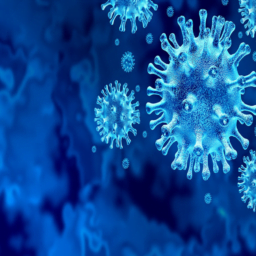Introduction
As students, our capacity for new concepts is crucial to the acquisition of new skills and effects throughout online lectures on the longevity of our attention. The COVID-19 pandemic has resulted in online training, which reduces the pressure to maintain credentials and overall mental immunity for students to present their assignments. ‘Mental health’ remains a stigmatized and brushed topic in India until now. India has one of the worst rates of suicide in the world for children in schools, where fear and shame are related to mental health concerns, such as depression, parental pressure, and a focus on examinations.
Should the Indian system of education make students’ mental health courses compulsory?
The Indian Education System is examined for its hard and unreasonable standards which emphasize quantitative education, tiring hours, and the implementation of a curriculum to limit the originality of the kid. The pupils are a victim of worsening mental health issues because of Indian parents’ usual nascent mentality that is a marker of a child’s intellect.
The requirement for the hour in the school system is creativity and self-winding. Mental health education, which alleviates the stigma of anxiety and depression, may do this and encourage pupils to discuss their ideas in an open and secure setting.
Benefits of Mental Health education in schools
- Education in mental health enhances sensitivity. The notion of self-care and well-being will be more understandable for students. You will be encouraged to take after your health and understand your health
- Kids will be well able to recognize the problems of mental health and the symptoms. Thus, they may be proactive and spot problems early on. An early procedure can make a difference to the world.
- They will be exposed to techniques and instruments that meet the difficulties of mental health that enable them to build problem-solving abilities.
Does depression increase the risk of suicide?
While most people suffering from depression do not die from suicide, serious depression increases the risk of suicide compared with those without depression. The probability of suicide death can partly be associated with depression intensity.
New statistics on depression that have been following people for several years show that around 2% of those persons who have ever been treated for depression in an outpatient environment are dying from suicide. In the hospital, the incidence of suicide death is twice as high among those who are ever treated for depression (4%). Depression patients are approximately three times the likelihood of killing by suicide (6%) following suicide ideation or suicide attempts as those who have been treated as surgery patients. Gender disparities in the risk of suicide in the depression also exist dramatically in a lifetime. Whereas around 7% of males who have a lifetime of depression die by suicide, just 1% of women who have a lifetime of depression die by suicide.
Incidents happened in Jharkhand
Although one of the best centres for mental health treatment is home, there appears to be an essentially non-existent mental health system in the state with just four out of 24 districts operating the District Mental Health System. Amongst many others, the National Mental Health Survey (NMS), 2016, Jharkhand concluded that the treatment gap in Jharkhand is only about 75% owing to the government’s low attention on mental health, the highest in the country, for Common Mental Disorders (CMDs) and substance use diseases.
The results of the survey commissioned by the Health and Family Welfare Minister of the Union (INWS) Bangalore and carried out by the Central Psychiatric Institute (CIP) Ranchi in coordination with the Ministry of Health, Medical Education and Family Welfare of the State clearly show that the government needs to come up with specific information.
Jharkhand survey co-investigator Dr. Nishant Goyal stated that four were selected for Jharkhand research in 43 districts across the country. ‘Interviews of 3,590 persons, including 267 teenagers, were held in Bokaro, Hazaribagh, Ranchi, and Godda and there were 3,022 interviews with valuable documents on several study methodological criteria. In all, almost 40,000 adults and 1,200 youngsters from 12 states in six regions were interviewed by NMHS. The statistics show that over 15 Crores of Indians aged 13 or older are likely to have one or more issues and need assistance,” said Goyal on Friday, the World Health Day.
Different components of mental health education
- A curriculum on mental health should include three components in schools – the first is to educate people who could be in distress on the significance of emotional well-being, removes the taboo surrounding psychic sickness. The aim is not to examine the intricacies of the many diseases and their symptoms, but rather to realize that mental health issues are real, that they are not due to a person’s character defect or weakness, and that there may be suffering in many individuals around us.
- The second element of the program should thus be to encourage behavioural seeking assistance. The sensations of loneliness, hopelessness, and helplessness experienced by students can be improved if they know where and how to get support. It is important to stress the concept that requesting assistance is rather a strength than a weakness. And most all, students need a safer place in the form of professors and consultants with whom they can express their problems, rather than depending on unsustainable sources of information such as peers and the Internet.
- The third and arguably the most essential part of the curriculum is the preventative aspect, and we may take any action to guarantee that kids can adapt more effectively and cope with the demands and problems they experience. The answer is life skills training, which enables learners to improve self-understanding and emotional awareness, improve communication skills such as empathy and affirmation, critical thinking, and effective choices, and successfully deal with stress with positive attitudes and thinking.
Why is it necessary to compensate for mental health education?
Mental health education must start in the early school years to support optimum growth and development. In this period kids make their first friendships and teens shape their self-esteem and self-esteem. Young people are growing up and encounter a range of difficulties including exclusion, intimidation, conflict, and poor self-appreciation. We need to recognize and provide them with the necessary tools to deal with these problems. The mental health of the kids may be substantially enhanced by a united effort of experts, parents, and teachers, thus creating the scene for a better, happier future.
- Increasing awareness is a key objective of mental health education. This teaches youngsters what psychology is and how to preserve healthy psychological health. It is important for young people to grasp the notion of self-care and to be accountable for themselves. The concept that mental health is an important aspect of total health and well-being should also be emphasized.
- Another objective of education in mental health is to teach children, parents, and teachers how to detect the problems of mental health in themselves and others. When difficulties with mental health are left undetected or untreated, they can lead to poor coping skills and adversely influence a child’s capacity to develop and learn. Children must also have methods and resources for coping with mental health issues, together with increased knowledge of the importance of mental health.
- Early mental health intervention may also change the world. Before serious mental diseases manifest, little changes in behaviour and thoughts typically occur. Teachers, families, friends, and individuals themselves can detect these early warning signals, but only if they know what to look for. Some of these indicators include changes in mood, anxiety, retreat, and a drop in academic performance. The severity of the mental disease may be reduced by early intervention. It can also delay or perhaps prevent the severe mental disease from occurring.
- Awareness of mental health can save a life. The problem of suicide and self-harm among young people is worrisome. Suicide is the second-largest cause of mortality for young people between 15 and 24 years old. Awareness of the signs and other psychiatric conditions might enable young people to detect these problems and look for assistance before it is too late. By integrating mental health education and information on how and where to seek assistance, the school may save lives.
Conclusion
In conclusion, with each generation, the frequency of mental illness increases in youth, and society are responsible for the greatest possible protection for our kids. School teaching on mental health may have a major influence on the present and future mental health of children. The awareness of mental health can also help to eradicate stigma and promote resilience. The advantages of such training are overwhelming. Schools can promote healthy mental health via confidence and self-esteem. Kids need to be taught how to detect indications of mental health deprivation and how to seek help in the face of mental health problems.
Author(s) Name: Aeshita Marwah (University of Petroleum and Energy Studies, Dehradun)
















